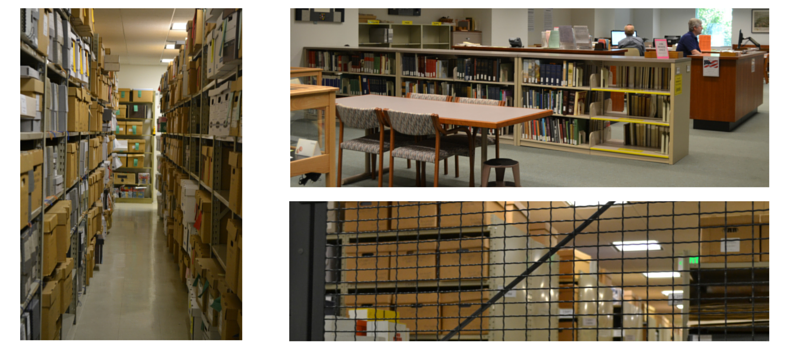
UW's ENVIR 480: Sustainability Studio class in the Program on the Environment presents students with a sustainability topic which they engage in as part of an experiential learning course. The topics change each quarter - this spring, the students researched the UW's environmental history. Over the coming weeks, we'll be publishing some of the information students uncovered. As part of their research, students used archival resources in the Libraries' Special Collections, which includes material dating as far back as the 1800s. The following impressions of using the Special Collections are taken from reports the students wrote as part of the class.
Miki Frank: One of the most hidden places on campus is not Sylvan Grove as most might expect, it is actually UW’s Special Collections. The basement of Allen Library holds some rare, archived materials from all different topics and from many different years. Whether you just need photographs or you need minutes from a city council meeting in the early 1900s, the chances of you finding it here are quite high.
Emily Warnock: Hidden beneath Allen Library, the UW Special Collections Library is a little-known secret that allows you to delve deep into the past of the UW. When walking through the twisting hallways and rooms with boxes full of historical documents stacked to the ceiling, I was awestruck. How could I have been unaware of this place for so long?
Tiffany Wu: With their iconic architectural styles, I was well aware of where Suzzallo and Allen stood as campus landmarks, but I never gave much thought to what lay underneath them. The answer, I discovered, was a vast network of archives that dated back to the early days of the UW, offering pieces of history better than any modern-day search engine could.
Sarah Geyer: As someone who has spent most of my life doing the large majority of my research online, using the Special Collections library was an interesting experience. It’s not weird just because it’s a library with real books and newspapers that I can’t “Ctrl-F” to find the information I’m looking for, it’s weird because I feel like I’m entering a museum. You can’t bring any bags in and you can’t write with pens. All around you are old books and there’s even a large section devoted to card catalogs – card catalogs.
You’re in the basement of Allen Library with practically no one there, and you’re digging through boxes looking for something – anything that might be relevant to your research. Even trying to decide which box to look through isn’t easy. The boxes aren’t organized by topic; they’re organized by the person the collection revolves around.
Natalie White: As we journeyed through the archives of the Special Collections library, I will admit I was a little intimidated and overwhelmed by the sheer volume of material available. I kept thinking to myself, how am I ever going to find what I’m looking for?
Emily Warnock: In this way, researching at the Special Collections Library is a bit like a scavenger hunt. Extraneous details are everywhere and it can be difficult to sort out what is and is not important to your research. However, when you do find key pieces of information, it is like finding buried treasure. With enough attentiveness and persistence, these key pieces of information can add up to form a story of the past.
Dorothy Kong: Walking into this library for the first time, I immediately thought of similar libraries filled with physical artifacts that I’ve only seen in movies and TV shows. This was my first time seeing a telegram, an experience that definitely made me think about what communication must have been like 100 years ago.
Sarah Geyer: Despite its inconvenience and perhaps inefficiency, going to the Special Collections is something that every student should try to do at some point, if only to admire UW’s commitment to preserving the knowledge and the artifacts of the past. It made me wonder if perhaps someday there’ll be a box or two with my name on it, and just what might be in those boxes.